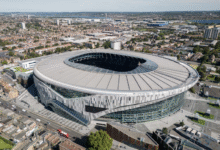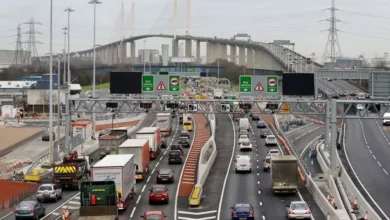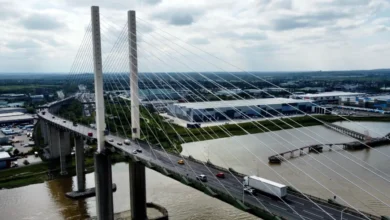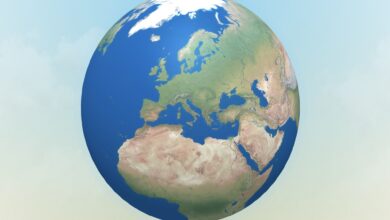Jamaica Hurricane:1 Understanding the Impact and Preparedness for the Island
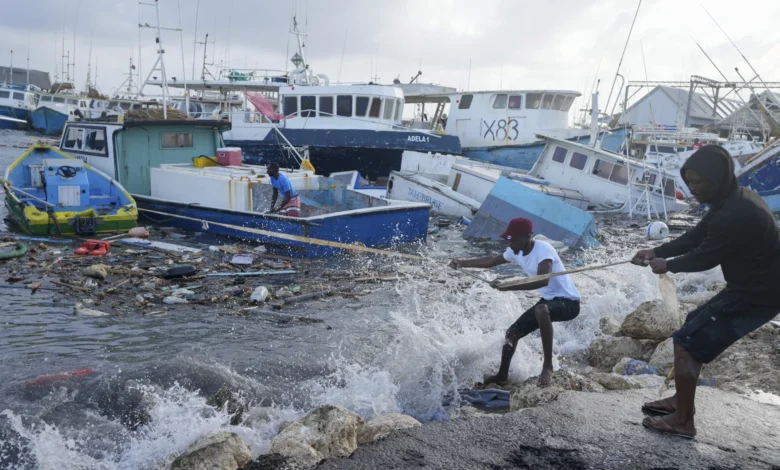
Jamaica Hurricane, a stunning Caribbean island known for its reggae music, white sandy beaches, and vibrant culture, is also a country that faces natural disasters like hurricanes. Hurricanes are powerful storms that can cause widespread damage, destruction, and loss of life. In this article, we’ll explore the history of hurricanes in Jamaica, how they affect the island, the preparedness strategies in place, and the future outlook for hurricane seasons in the region. Understanding these factors can help both locals and tourists better prepare for these powerful weather events.
The Science Behind Hurricanes: What Makes Them So Dangerous?
To understand why hurricanes are so dangerous to Jamaica, it’s important to first grasp the science behind these tropical storms. Hurricanes are large, rotating storm systems that form over warm ocean waters, typically between the months of June and November. These storms gather energy from the ocean’s warm surface temperatures and can intensify quickly, becoming massive systems that cause heavy rain, strong winds, and storm surges.
A hurricane’s strength is measured on the Saffir-Simpson scale, which categorizes storms from Category 1 (least severe) to Category 5 (most severe). Category 1 hurricanes feature wind speeds of 74-95 mph, while Category 5 hurricanes can produce winds greater than 157 mph. As these storms approach land, they can cause catastrophic damage, including flooding, property destruction, and significant loss of life.
The island of Jamaica, sitting just south of the hurricane belt, is particularly vulnerable to hurricanes due to its proximity to the Caribbean Sea, which provides the perfect warm waters that fuel these storms. Even though hurricanes rarely make direct landfall in Jamaica, the island often faces strong tropical storms and hurricane remnants that cause severe disruptions.
The History of Hurricanes in Jamaica
Jamaica Hurricanes history with hurricanes dates back hundreds of years, with several significant storms leaving lasting impacts on the island’s population and infrastructure. One of the earliest recorded hurricanes to impact Jamaica was in 1780, known as the Great Hurricane, which devastated the island. Since then, Jamaica has faced several major storms, with some proving to be particularly destructive.
More recently, Jamaica faced the wrath of Hurricane Gilbert in 1988, one of the most intense hurricanes to strike the island in modern history. Gilbert was a Category 5 storm, and it caused widespread damage to infrastructure, homes, and agriculture. Thousands of people were displaced, and the island’s economy took a significant hit as key sectors like tourism and farming were severely affected. The recovery from this storm took years, highlighting how devastating hurricanes can be to the island.
Following Hurricane Gilbert, Jamaica also faced other major storms, such as Hurricane Ivan in 2004 and Hurricane Dean in 2007. Both storms caused significant damage to the island, although their impacts were not as severe as that of Gilbert. Despite these challenges, Jamaica has continued to build resilience and improve its disaster preparedness systems to reduce the impact of future hurricanes.
The Economic Impact of Hurricanes on Jamaica
The economic impact of hurricanes on Jamaica is profound, affecting multiple sectors of the economy. One of the most vulnerable sectors is agriculture. The island’s tropical climate supports a wide variety of crops, including sugar cane, bananas, and coffee, all of which are highly susceptible to hurricane damage. Strong winds can destroy crops, while heavy rains can lead to flooding and soil erosion, further damaging the agricultural industry.
Another major economic sector impacted by hurricanes is tourism. Jamaica is a popular tourist destination, attracting millions of visitors each year. However, hurricanes can disrupt travel plans, damage hotels and resorts, and deter tourists from visiting. This can result in a loss of revenue for local businesses and the broader tourism industry.
Hurricanes also have long-term effects on Jamaica’s infrastructure. Roads, bridges, and buildings can be damaged or destroyed, requiring expensive repairs and reconstruction. In some cases, power outages and water shortages can last for days or even weeks, making life difficult for residents. The costs associated with rebuilding and recovery efforts can strain the country’s finances, leaving the government to rely on aid from international organizations and foreign governments.
Jamaica’s Preparedness Strategies for Hurricane Season
In recent years, Jamaica has made significant strides in improving its preparedness for hurricane season. The Jamaican government, along with various local agencies, has developed comprehensive disaster preparedness plans aimed at reducing the impact of hurricanes on the population. These plans include early warning systems, evacuation procedures, and public education campaigns to ensure that people know how to respond during a hurricane.
The island’s Meteorological Service plays a critical role in tracking hurricanes and issuing timely warnings. By using advanced technology such as satellite imagery and weather radar, meteorologists are able to predict the paths of hurricanes and provide accurate information about their expected intensity. This allows residents to take necessary precautions, such as evacuating flood-prone areas or securing their homes, in advance of the storm’s arrival.
In addition to government-led initiatives, local communities have also taken steps to improve their resilience to hurricanes. Many coastal areas have implemented flood control measures, such as seawalls and drainage systems, to minimize the risk of storm surges and flooding. Additionally, some regions have developed community shelters that are specifically designed to provide safe havens during a hurricane.
The Role of Technology in Hurricane Forecasting
Advances in technology have revolutionized the way hurricanes are forecasted, making it easier for experts to predict their paths and impacts. Modern meteorological tools, such as computer models, weather satellites, and radar systems, provide real-time data that can be used to track the development of hurricanes and predict their movement. This information is crucial in providing early warnings and helping local authorities make decisions about evacuations, emergency response efforts, and public safety measures.
In Jamaica, the Meteorological Service uses state-of-the-art technology to monitor weather patterns and issue warnings when hurricanes are detected. These forecasts are made available to the public through various channels, including radio, television, and online platforms. By ensuring that people have access to accurate information, the island is better able to respond to hurricanes and mitigate their effects.
Additionally, technology has played a significant role in improving communication during hurricane events. Mobile phones and social media have become vital tools for disseminating emergency alerts and staying in touch with loved ones during and after a storm. The use of drones, satellite imagery, and other remote technologies has also enhanced the ability to assess damage and plan recovery efforts more effectively.
The Environmental Consequences of Hurricanes in Jamaica
While the human and economic impacts of hurricanes are often the focus, it’s important to consider the environmental consequences as well. Hurricanes can have devastating effects on the natural environment, particularly in coastal areas where many of Jamaica’s most sensitive ecosystems are located.
Coral reefs, mangroves, and coastal wetlands are all vulnerable to the powerful winds and storm surges associated with hurricanes. These ecosystems play a crucial role in protecting the island’s coastline from erosion, supporting marine biodiversity, and providing resources for local communities. When hurricanes damage these areas, it can take years for the ecosystems to recover.
In addition to physical damage, hurricanes can also disrupt the island’s flora and fauna. Forests may be decimated by the high winds, while wildlife may be displaced or killed by flooding and storm surges. The loss of biodiversity can have long-term effects on Jamaica’s natural heritage and tourism industry, as many visitors come to the island to experience its rich natural beauty.
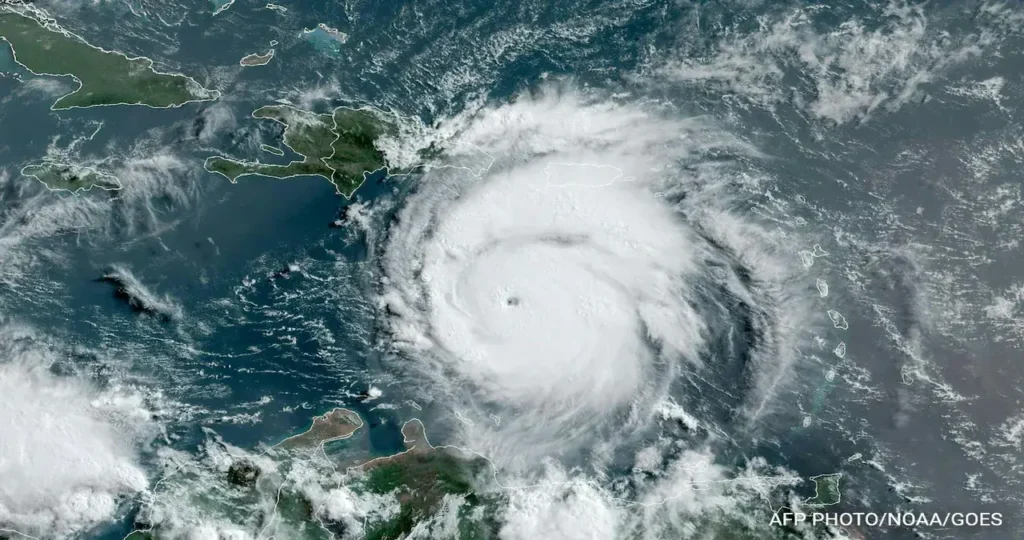
Future Outlook: Will Jamaica Face More Hurricanes?
As the world continues to experience the effects of climate change, there is growing concern about the future frequency and intensity of hurricanes in the Caribbean region. Rising sea temperatures, changes in atmospheric conditions, and the increased frequency of extreme weather events all point to the possibility of more intense and frequent hurricanes in the years to come.
For Jamaica, this means that the island may face an increased risk of major hurricanes in the future. The government and local communities will need to continue their efforts to improve resilience, strengthen infrastructure, and invest in climate change adaptation strategies. The increasing unpredictability of hurricane seasons will require continuous adaptation and a proactive approach to disaster preparedness.
Conclusion: The Importance of Resilience in the Face of Hurricanes
Hurricanes are an inevitable part of life in the Caribbean, but with the right preparedness and response strategies, Jamaica can minimize the impact of these powerful storms. From improving early warning systems and investing in infrastructure to enhancing community resilience and fostering climate change awareness, the people of Jamaica have shown that they can withstand the challenges posed by hurricanes.
As we move forward into an uncertain future, all stakeholders need to continue to work together to build a safer, more resilient Jamaica. By doing so, the island can face future hurricanes with confidence, knowing that its people, government, and communities are well-prepared for whatever challenges lie ahead.This marks the completion of the first part of the article. Would you like to proceed with additional sections or discuss any specific aspects further?
